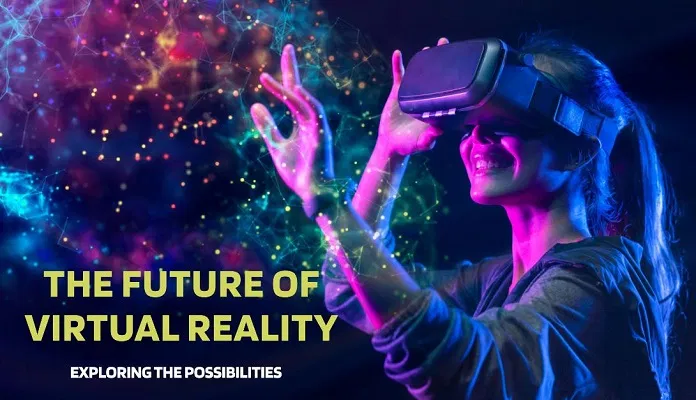Virtual Reality (VR) has already made a substantial impact on various industries, but its journey is far from over. The future of virtual reality holds the promise of even more transformative experiences and technological advancements. Here’s an in-depth exploration of what lies ahead for VR:
Table of Contents
Show
1. Enhanced Hardware
- Higher Resolution Displays: Virtual reality headsets will continue to push the boundaries of display technology. Expect even higher resolutions, reducing the “screen door effect” and delivering visuals that approach real-life clarity.
- Lighter and More Comfortable: The design of VR headsets will become sleeker and more comfortable, making long-duration VR experiences more enjoyable. Advancements in materials and ergonomics will play a crucial role.
- Wider Field of View: Manufacturers are working on expanding the field of view in VR headsets to provide a more immersive experience, bringing peripheral vision closer to reality.
- Eye-Tracking Technology: Integrated eye-tracking technology will allow headsets to track users’ gaze, enabling features like foveated rendering, where only the area the user is looking at is rendered in great detail, reducing the computational load.
2. Improved Interactivity
- Natural Hand and Body Tracking: VR interactions will become more intuitive with advancements in hand and body tracking. Users will be able to use their hands, fingers, and even their entire bodies to interact with the virtual environment.
- Haptic Feedback: Haptic feedback will continue to evolve, offering more realistic sensations. Users will be able to feel textures, impacts, and even the sensation of objects in their hands.
- Voice Commands and AI Integration: Voice recognition and AI integration will enable users to interact with VR environments using natural language commands, making experiences more fluid and engaging.
3. Expanded Applications
- Education Revolution: Virtual reality will revolutionize education by providing immersive and interactive learning experiences. Virtual classrooms, historical reenactments, and science simulations will become commonplace in educational settings.
- Healthcare Advancements: VR will play an increasingly vital role in healthcare, from patient therapy and rehabilitation to medical training and remote consultations. VR can help reduce pain, anxiety, and stress in clinical settings.
- Virtual Tourism: As travel restrictions evolve, virtual reality technology will allow people to explore destinations worldwide, offering highly detailed and realistic travel experiences from the comfort of their homes.
- Virtual Collaboration: VR will redefine remote work and collaboration. Teams and professionals will meet in virtual offices, conduct product design sessions, and even create art collaboratively in virtual spaces.
4. Social and Entertainment
- Metaverse Development: The concept of the metaverse, a collective virtual shared space, will continue to grow. Companies will invest in creating interconnected virtual worlds where people can socialize, work, and play.
- Live Events and Performances: Virtual reality will provide new avenues for attending live events, concerts, and performances. Users will experience the thrill of being part of a massive crowd without leaving home.
- Immersive Storytelling: Storytelling in VR will evolve, offering more interactive narratives where users’ choices significantly impact the storyline. VR movies and experiences will blur the line between cinema and gaming.
5. Ethical and Privacy Considerations
- Data Privacy: As virtual technology becomes more integrated into daily life, concerns about data privacy and user tracking will arise. Striking a balance between personalized experiences and protecting user data will be a significant challenge.
- Ethical VR: Ethical considerations in VR, such as ensuring accessibility, combating harassment, and preventing addiction, will gain prominence as the technology becomes more widespread.
6. Accessibility
- Affordability: As technology advances, VR headsets will become more affordable, making them accessible to a broader range of users. This democratization of VR will lead to increased adoption.
- Inclusivity: Efforts will be made to ensure that VR technology is accessible to individuals with disabilities, with features like text-to-speech, speech-to-text, and customizable user interfaces.
What are the Advantages of Virtual Reality (VR) Technology?
Top 16 Safety Considerations in Virtual Reality
Top 20 Tips for a Seamless VR Experience
- Advertisement -


